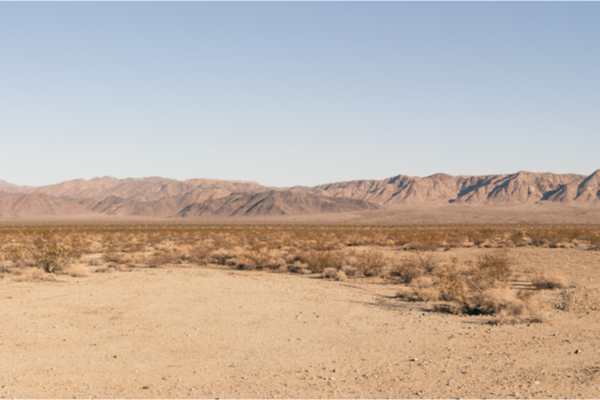The Triple Dip La Nina predicted to last through the 2022/2023 season is NOT good news for the western U.S. and it’s ongoing (neverending) drought. While drought worries are quelled across New England, Midwest and Southeast this Autumn, abnormally dry conditions will remain locked in place across most of the central U.S. throughout the season.
According the the U.S. Drought Monitor, exceptional drought conditions, the most severe classification of drought, were present in parts of Texas, Oklahoma, Kansas and Nebraska. “It’s going to take a lot to break this drought,” AccuWeather Expert Senior Meteorologist Paul Pastelok explains. “The area is going to be hurting. I think going at least into the first half of fall, the moisture is just not going to be there.”
One of the few sources of moisture will derive from the end of the North American monsoon, but most or all of the rain and thunderstorms associated with the monsoon will remain over the Four Corner states, which include Arizona, New Mexico, Utah and Colorado. Tropical-fueled downpours will also drench areas along and near the Texas coast, but will seldom extend farther inland to the regions experiencing the worst of the drought.
Thunderstorm activity over the central U.S. will increase in October and November delivering much-needed rain, but the bulk of the storms will likely be concentrated over the eastern Plains in eastern Kansas, Oklahoma, Missouri and Arkansas. “October can be the most active month with potential tornadoes from the lower Mississippi Valley to the Ohio Valley,” Pastelok warned.
Is it hot in here? Extended drought will be accompanied by lingering heat across most of the central U.S., especially during the first part of autumn.
Energy demand will remain elevated through September across the entire state of Texas. Highs in the upper 90s to near 100 F are not unheard of in these cities during September, and that will not be a difficult temperature level for thermometers in the cities to reach amid excessively dry conditions. This persistent warmth across the nation’s heartland will delay the first frost, potentially by weeks, across much of the region.
Another factor behind the extended early-autumn heat can be traced back to the Gulf of Alaska. Pastelok states that a persistent lower pressure in this area will influence the track that weather systems take as they traverse North America, and will “cut off any significant cold air from reaching the central and western U.S. too early” in the season.
The combination of extreme drought and long-lasting heat will have severe implications on the nation’s agriculture — some of which may be noticeable to Americans as they hit the grocery stores, even on top of current price hikes amid inflation.
“The drought has impacted commodities on a negative side, especially for the Plains,” Pastelok said. “Most places have just given up as far as the wheat crop goes and the cotton crop is hurting a little bit,” Pastelok explained. He added that some crops will fare better than others, including the spring wheat crop across North Dakota and Montana.
One of the biggest ramifications could be felt by cattle ranchers. Widespread heat and drought have already forced some ranchers to let go of their cattle. In 2020, beef exports generated $1.4 billion in revenue for ranchers in Kansas, a state that accounts for nearly 20% of all U.S. beef exports. Kansas is one state that has already reported major cattle losses amid extreme heat with more losses possible before the heat finally breaks.
“We’re probably going to see [a] low supply of meat going into the fall and winter seasons based on the type of temperatures and heat and dryness we’re seeing,” Pastelok explained. “This can lead to higher prices, even after [recent] increases.” He added that extreme heat in the lower Mississippi Valley could lead to lower yields in soybean crops through September.
—
Photo Credit: RoSy76 / Shutterstock.com
